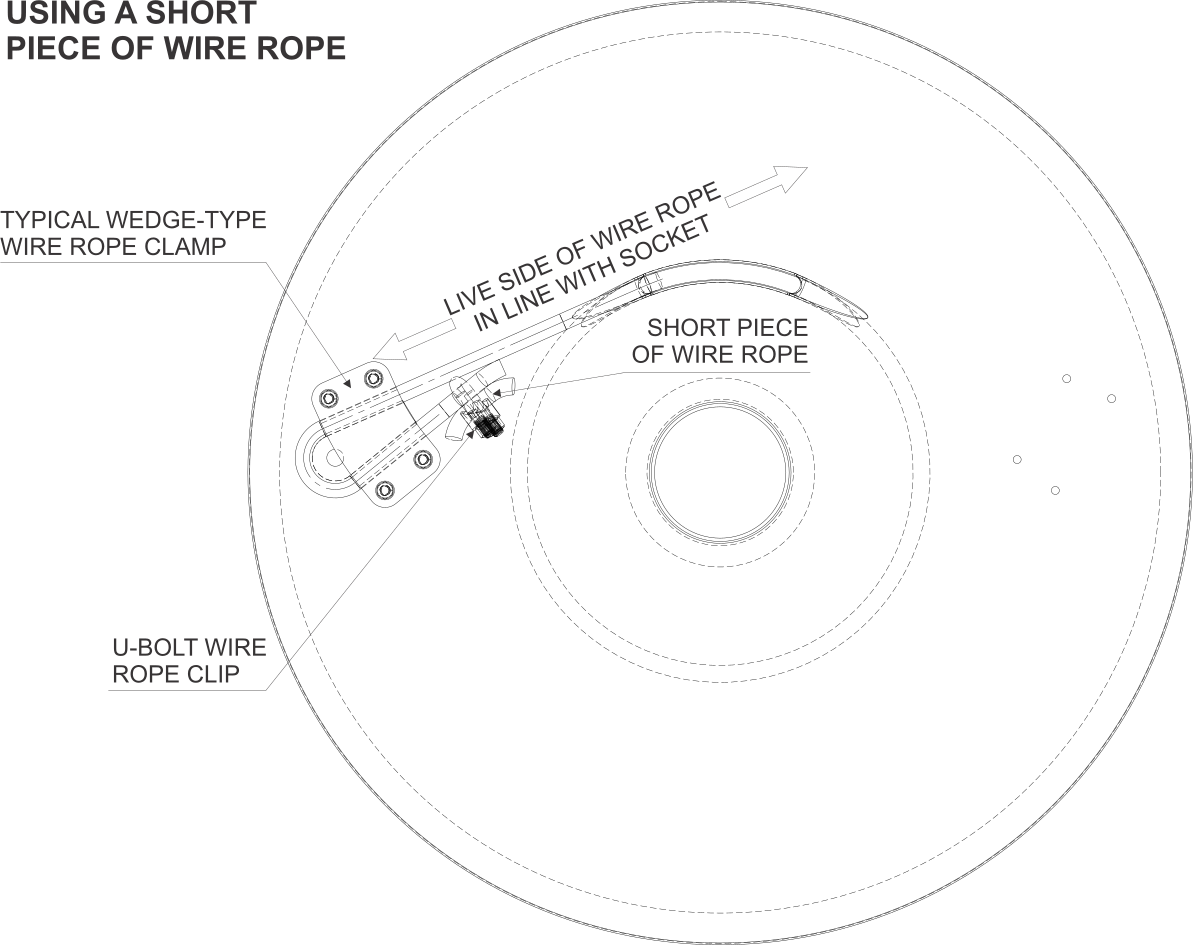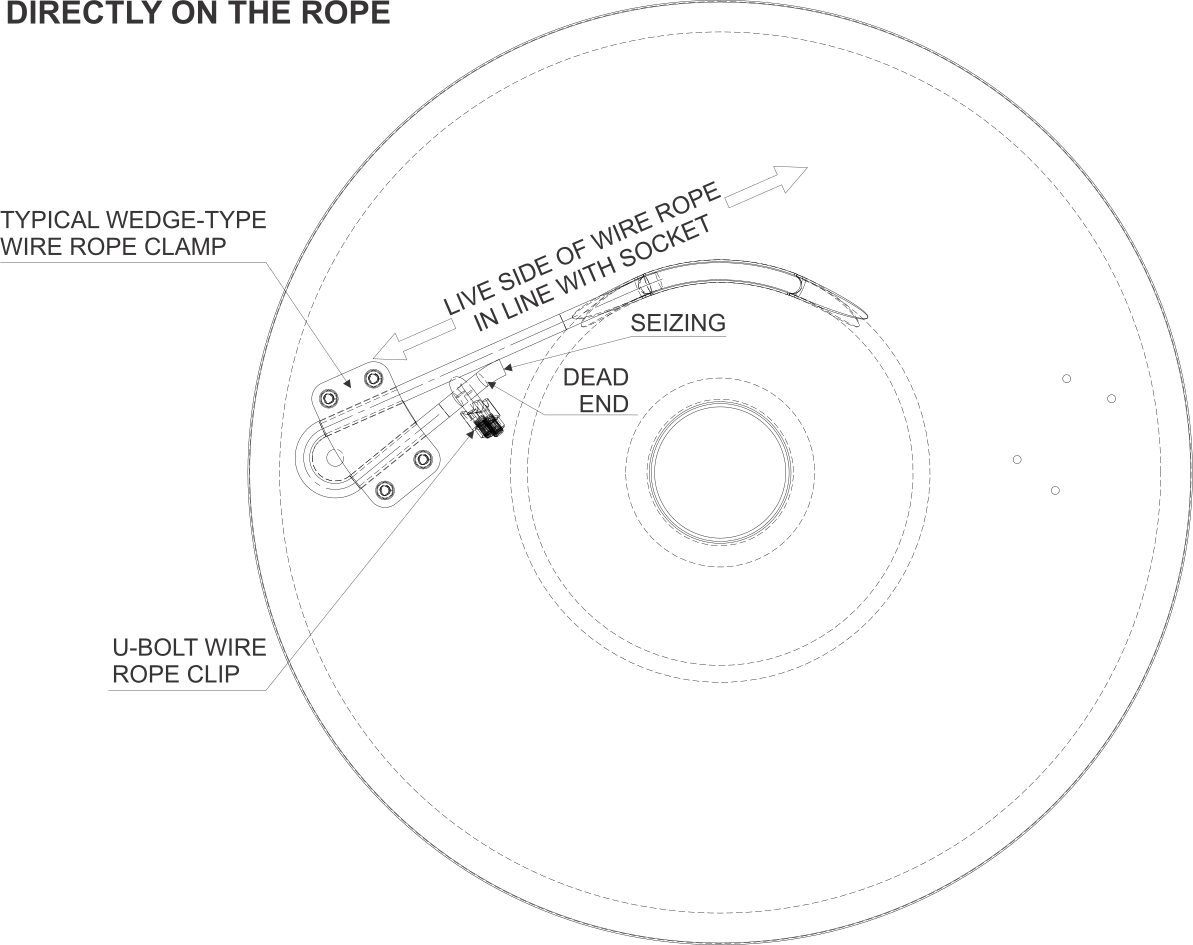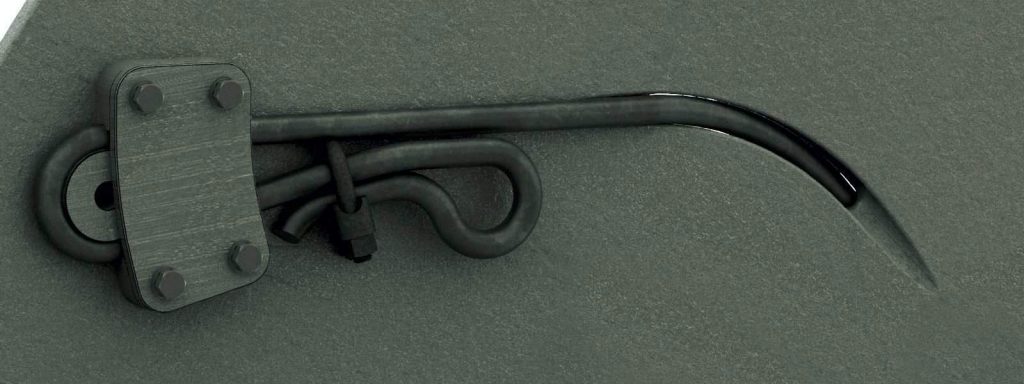Applications
Wedge-type sockets are used in lifting, pulling, tensioning and staying systems as a simple mechanical connection to steel wire ropes, especially where steel wire ropes may require shortening. One end of the wedge-type socket can clamp a rope with wedging action, and the other end can connect to another fitting or anchorage.
The wedge-type socket is designed for use on wire ropes up to and including 1770 grade wire with a wire rope core; however, higher grade wire rope may be used, provided it meets the intent of this Standard.
In some applications, some regulatory authorities may apply restrictions to the use of wedge-type sockets.
Wedge-type sockets shall not be used where moving loads can dislodge socket wedges out of the body. Where this may occur, the wedge-type socket should be positioned so that the moving load cannot contact the socket wedge.
Wedge-type sockets shall not be used where they are unable to be readily inspected.
The WLL is determined based on an M3 general condition of use as specified in AS 1418.1, which may need to be referred to determine the specific conditions of use. In addition, the particular user may require a duration factor to be applied to determine the WLL for the system.
In any lifting, tensioning or staying system, the safe working load of each component shall take account of the conditions (such as the classification of load application as specified by AS 1418.1) and shall be compatible with any loads inherent in and applied to the system. Each component should readily connect with each adjacent component. Therefore, it is important that components of lifting, tensioning or staying systems be quickly and positively identified in service for size, lifting capacity and quality grade.
Only one quality grade of the fitting is included in this standard. It is suitable for use with ropes of breaking strength up to and including Grade 1770 WRC six-strand wire ropes and other grades that have been typed tested.
Fitting of Ropes
Where a rope is fitted to a wedge-type socket, the nominal diameter of the wire rope shall be equal to the nominal size of the wedge-type socket, and the loaded end of the rope shall enter the socket body so that when loaded, it will not bend where it leaves the socket body.
Where a wedge-type socket is connected to a non-spin wire rope, you must take extra care by brazing the end of the rope or seizing the end of the rope before fitting it to prevent disturbance to the rope construction.
The wire rope grip is recommended to be attached to the non-loaded end of the rope adjacent to the socket wedge to prevent the wedge from being dislodged in an unloaded condition.
Any means used to prevent a socket wedge from being accidentally dislodged should not adversely affect the safety performance of the socket assembly.
Methods for Fitting Wedge-Type Sockets to Wire Ropes


Inspection
You shall inspect terminations made with wedge-type sockets after the first and the second loading.
A competent person shall inspect Wedge-type sockets to ensure they are satisfactory for continued use.
Before being refitted, socket bodies and socket wedges shall be examined for severe marking and damage.
You shall examine wire rope adjacent to a wedge-type socket for breaks in wires before reassembly.
Adjusting Rope Length
Wedge-type sockets shall not be used where there is a likelihood that the rope may require lengthening at that end. Lengthening would bring at least a portion of the rope on which a wedge-type socket has been fastened into a position now subject to full load, and this portion of the rope may be damaged.
In some applications, it is the practice to provide the initial rope much longer than required so that shortening may be carried out several times, quickly and easily, without recourse to splicing. In addition, such shortening is recommended at regular intervals to significantly increase rope life of drag, hoist and boom-hoist ropes by sharing overworked rope sections along a greater length of the ropes. For example, you may punch the socket wedge out of the socket body, a length of wire cut off, the rope re-fitted in the socket body and the socket wedge replaced and pulled tight.

